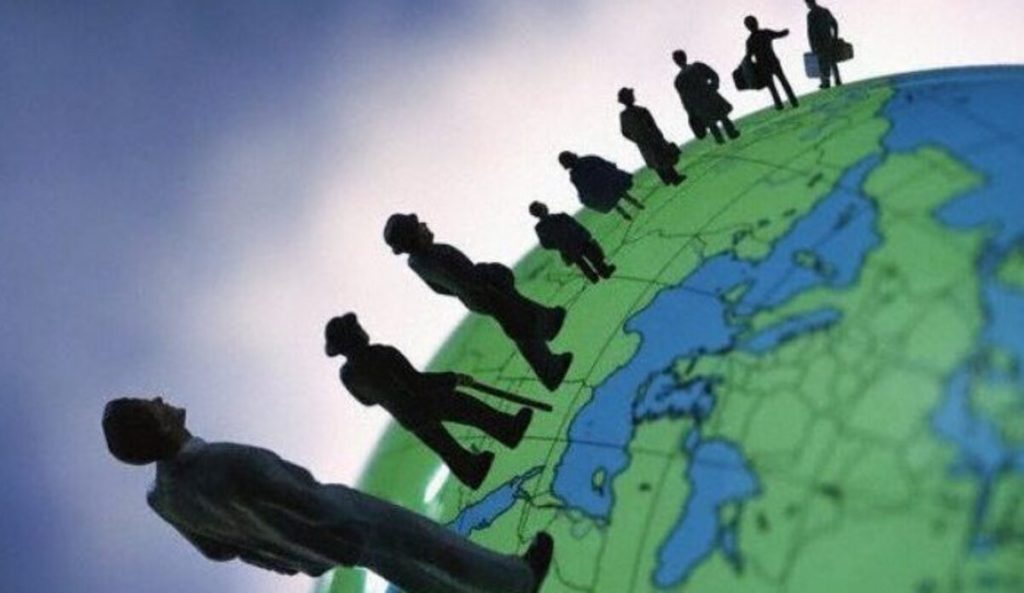Authors: Francesco Pasetti and Carolota Cumella de Montserrat – CIDOB*
Dossier: Can we govern migration better?
Guest-editor: Elaine Lebon-McGregor
*This article draws upon the work done in the framework of the project ADMIGOV – Advancing Alternative Migration Governance, financed by the EU’s H2020 research and innovation program (GA No 822625)
Abstract
Recent migratory crises are shedding light on the limits of the global systems of migration governance. These new challenges call for new solutions and the creation of new tools for diagnosis. The “toolbox” currently available appears indeed inadequate both to capture the complexity of the actual governance system and to face the reality of the present crises of human mobility. This paper gives an overview of some its gaps and highlights some of the crucial aspects that need to be covered. New tools for evaluating migration governance need to account for all the actors, layers, and stages of migration governance and to be grounded on the principle of migrant protection.
16.2 million people applied for international protection in the last decade. The number of border crossing grew more than five times in 2015 after the outbreak of the so-called refugee crisis. Five years later, more than 20,000 people have lost their lives in the Mediterranean Sea, trying to reach European shores and 8,000 Rohingya and Bangladeshi refugees have been left in the shores of the Andaman Sea trying to reach Malaysia, Indonesia and Thailand. 5 million Venezuelans are living abroad, and over 3,6 million people currently seek international protection in Turkey.
The scope, intensity and fast-changing nature of contemporary human mobility is putting a strain on migration governance systems, shedding light on its limits and ever-more dramatic contradictions. This has urged the international community to make a critical assessment of the global system of migration governance in its entirety. The 2016 New York Declaration and the 2018 Global Compacts on Migration and Refugees emerged in such context and echoed the need to change the course and make room for a different approach in which migrants and refugees’ protection should be the inspiring principle and utmost priority. At the same time, they spelled out the need for new and alternative solutions to realize such goals. If new migratory challenges call for new policy solutions, from a research perspective, such solutions demand new tools of diagnosis of migration governance.
The global system of migration governance is complex and multidimensional, involving different actors, institutions, norms, and practices (formal and informal, public and private), operating at different layers of jurisdiction (national, local, transnational/regional, and supranational) and geopolitical ranges (covering countries of origin, transit and destination). Central governments are gradually yielding control over processes both upward, to supranational institutions (e.g., EU), and downward to local actors, including to the private sector (both to non- and for-profit actors, including multi-national and transnational companies). As the migration governance arena has become more crowded and contested, and old, “simpler” state-centered, hierarchical modes of governing are leaving room for more complex ones, marked by different spatial scales and new types of relationships, migration governance is becoming ever more tricky as the object of empirical inquiry.
Current tools to evaluate migration governance
In saying this, we think of the array of analytical tools employed by scholars and professionals to assess the quality and functioning of migration governance. Indicators of good migration governance is a stream of research that has significantly expanded over the last decades. It includes a wide and heterogeneous pool of datasets that; usually drawing on empirically-based, standardized experts’ appraisals; quantitively measure and evaluate countries’ migration governance systems (e.g. MGI, IMPALA, PCMD); this with the aim to identify strengths and weaknesses of the latter and, thus, to inspire policy improvement (see here for a short overview of the main datasets currently available). In view of the growing complexity of the governance system and the scale and nature of recent migratory crises, however, the available “toolbox for evaluation” seems deficient in several ways.
Firstly, it seems insufficient in its scope. Most of the indicators available fail indeed to account for the multilevel nature of the system of migration governance. Their analytical lens is geared towards the national level and the evaluation is carried out on actors and actions of central governments. Governance elements placed at other layers of governance remain essentially out of scope of the analysis. This means introducing significant biases into the evaluation exercise; for instance, underestimating the role of crucial actors, such as local NGOs, international organizations (e.g. IOM, UNHCR) and transnational companies. This gap is especially critical if we consider the growing relevance of these actors and, on the other hand, that they often hold different interests and values vis-à-vis national ones. The case of NGOs is paradigmatic in this sense as their actions have often been proven to challenge and contrast those issued by central governments.
Secondly, the current analytical toolbox fails to cover the variety of stages of the governance-making process. The sets of indicators available tend to narrow the evaluation to the legal domain. Indeed, so far, evaluating migration governance has basically meant a legal assessment of national laws and policies regulating international migration. The stage of implementation; when laws and policies are put into practice; has remained out of the lens of analysis. The point is that evaluating migration governance “on paper” but not “in practice” turns into a trivial exercise that analyzes what should be happening, rather than what is actually happening. A policy measure might seem indeed effective and adequate in recognizing rights to migrants de jure. However, if the required – human and monetary – resources are lacking, then practical implementation may be ineffective and migrants de facto unable to exercise such rights. Such a gap in terms of diagnosis inevitably turns into a biased evaluation.
Last but not least, current tools available fail to acknowledge migrants’ protection in the conceptualizations of “good” migration governance underlying their evaluation; or at least they do not give such principle the attention it deserves. Apart from the inherent intricacy of transposing abstract normative principles into quantifiable evaluation schemes, this gap is related to the tendency among scholars to focus on the instrumental features of governance (e.g. efficiency, efficacy, transparency). Brought to this ground, the ideal of good migration governance is reduced to the effectiveness of the governing methods. The problem is that a system of migration governance can be very effective in achieving political goals that are in contrast with migrants’ protection. From this perspective, hence, positive evaluations of migration governance can coexist with actions and practices that violate migrant’s rights. Steps have been taken in this direction (see, for instance, the ADMIGOV project), but the path towards a governance system that is consistent with the protection of migrants has yet to be walked.
What is badly measured can hardly be improved
New migratory challenges call for new policy solutions. These, in turn, demand new tools of diagnosis to make the governance system monitorable and its actors accountable for their actions. The toolbox currently available proves to be insufficient to meet such goal. It is unable to capture the complexity of the actual global system of migration governance and, thus, inadequate to present crises of human mobility. Here we have tried to sketch some its most critical flaws: its limited analytical scope, which overlooks crucial actors and stages of the governance process; and its normative touchstone of good governance, which fails to seriously take into account the principle of migrants’ protection. These flaws in terms of diagnosis cannot but translate into biased prognoses and faulty policy guidelines: what is badly measured can hardly lead to improvement. This shows a clear necessity for new and updated tools for analysis consistent with the complexity and multidimensionality of the current system of migration governance. And, for this to be useful and effective, it needs to place the protection of migrant people as the ruling principle and necessary condition of good migration governance.
Francesco Pasetti is a Research Fellow at CIDOB in the area of Migrations and adjunct professor at the Institut Barcelona d’Estudis Internacionals (IBEI) and at Pompeu Fabra University.
Carlota Cumella de Montserrat is a Researcher at the Migrations Area of CIDOB since September 2020. Carlota has a double degree in Law and Global Governance from ESADE University (Barcelona) and the Center for Transnational Legal Studies (King’s College, London) and holds a Master of Law (December 2020), with a specialization in international protection and asylum law at a European comparative level.

Carlota Cumella de Montserrat, Francesco Pasetti
